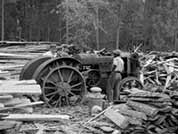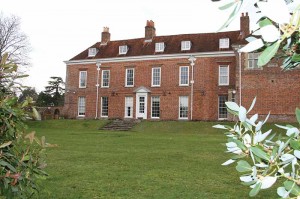Author Archives: New Forest Trust
Stallions
Stallions. Special rules apply to stallions on the Forest. They are only let out in late spring, so their foals are born in the following spring when there is more grass available. The rules are part of the ‘Stallion Scheme’ which was set-up to improve the quality of the ponies and to cut-down the number of unwanted foals. The stallions have to be approved before they are let-out, to check that they will pass-on good characteristics to their young. The number of stallions let out on the Forest is reviewed every year.
Ponies that are born to stallions on the Forest are said to be ‘Forest bred’. Ponies are the only domestic animals that breed on the Forest- the byelaws don’t allow commoners to turn out bulls, boars or rams.
Sawmills
 Sawmills powered by tractors were all over the Forest at one time. By today’s standards the equipment was very labour-intensive, although it was a huge improvement on sawing by hand. It was dangerous too, with none of the safety features that would be taken for granted now. It’s still possible to see the old equipment put to work at the New Forest Show.
Sawmills powered by tractors were all over the Forest at one time. By today’s standards the equipment was very labour-intensive, although it was a huge improvement on sawing by hand. It was dangerous too, with none of the safety features that would be taken for granted now. It’s still possible to see the old equipment put to work at the New Forest Show.
Rides
Rides are the clear tracks between the trees in the Forest plantations. The main purpose of the rides is to allow access for people working on the Forest, but some of them get used for recreation too. Not so long ago the rides had to be kept clear with scythes. It was a tough job, with miles of track to cut in the heat of the sun, with all the gnats and other biting Forest insects.
The Queen’s House
 The Queen’s House in Lyndhurst used to be a royal residence, and is now the New Forest headquarters of the Forestry Commision, and the home of the Verderers (see V). There has been a royal house on the site since the 13th century. The Queen’s House was built over 300 years ago in the reign of Charles 1st, when it would have been known as The King’s House.
The Queen’s House in Lyndhurst used to be a royal residence, and is now the New Forest headquarters of the Forestry Commision, and the home of the Verderers (see V). There has been a royal house on the site since the 13th century. The Queen’s House was built over 300 years ago in the reign of Charles 1st, when it would have been known as The King’s House.
The ‘Atlas of Forest Rights’ is held at The Queen’s House. The atlas has detailed maps of the Forest, showing where commoning rights are attached to land. You can inspect the atlas at The Queen’s House, but you have to book an appointment and pay a fee.
Pony catching
Pony catching. Most of the ponies out in the Forest are untamed, and not used to being handled, so it can be tricky to catch them if they need to be brought in. Some old commoners had special ways of catching ponies. They would hide a ‘ring rope’, or noose, in a narrow path between bushes, and then carefully stalk the pony to persuade it to go down the path and catch itself in the rope. ‘Colt hunting’ is another way of catching ponies, by following them on horseback and getting hold of them. It takes a lot of nerve and skill!

